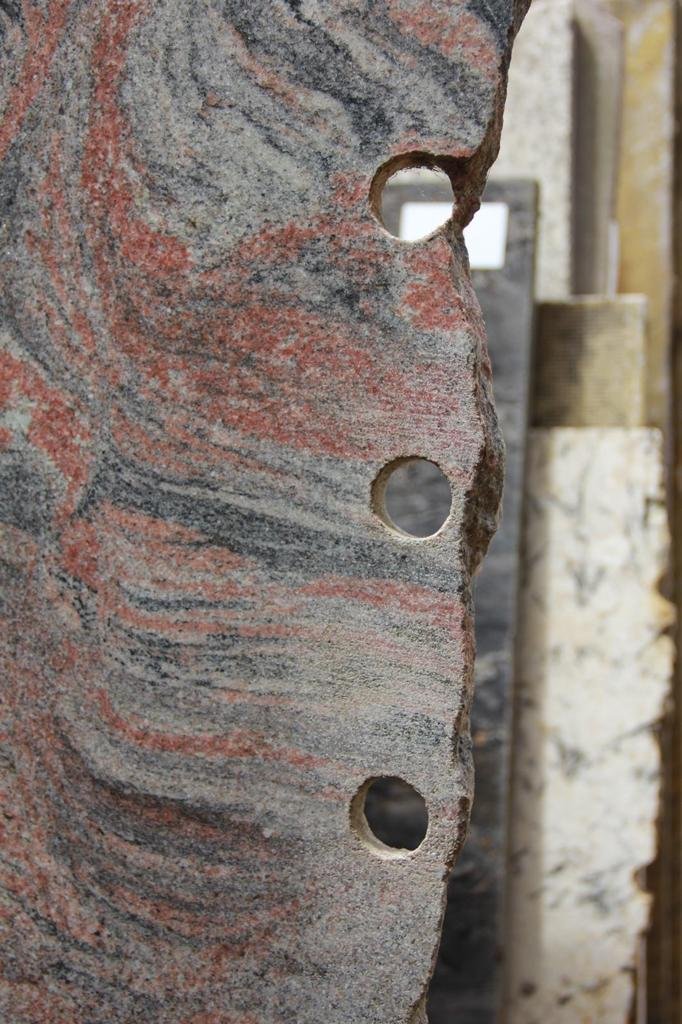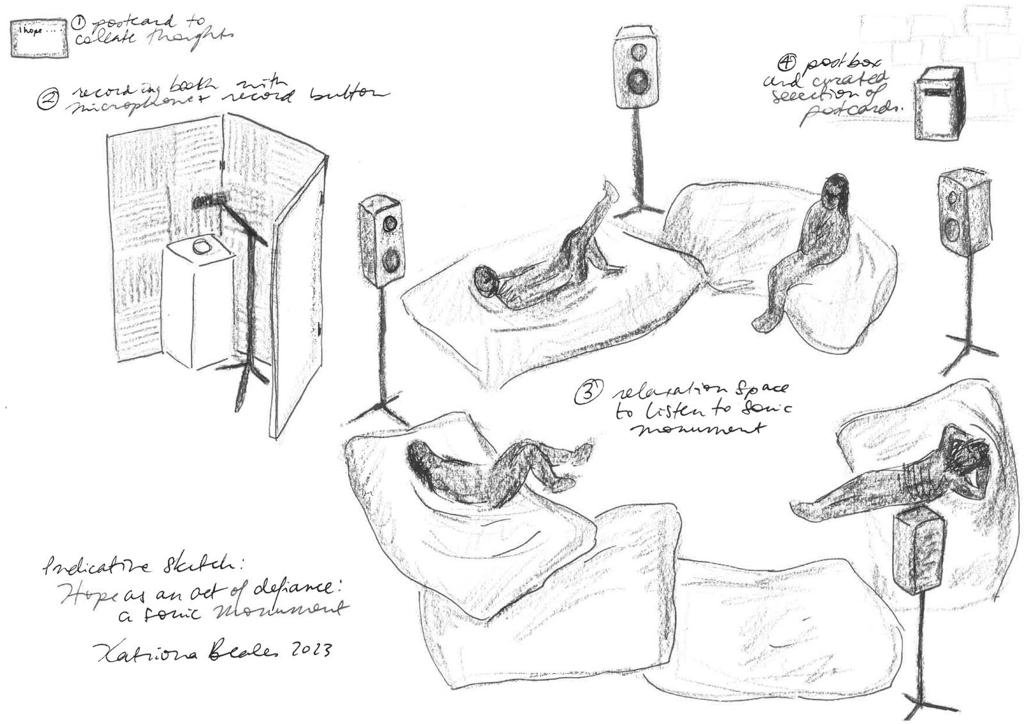Beatrice Gallello in conversation with Lena Wiesmüller
In a world perpetually in motion, where perspectives shift, and narratives evolve, the concept of a monument too has undergone a metamorphosis. No longer confined to the static pages of history, monuments have found new life in the open-air infinite landscape, becoming dynamic expressions of culture, dialogue, and communal engagement. At the nexus of this revolutionary transformation lies the Reimagining the Monument Commission project, an innovative venture launched by Sotheby's Institute of Art, heralding a paradigm shift in how we perceive and participate in the creation of collective memory.
In this exclusive with MADE IN BED, a conversation with Lena Wiesmüller, an Art Business alumna whose passion for art and community engagement encouraged her to take part in this project, will unravel the tapestry of the Reimagining the Monument Commission project. Lena's words and experiences become a guiding light, illuminating the path toward a world where monuments stand not as relics of the past, but as vibrant beacons of collective creativity, open-air galleries of shared history, and living testimonials to the power of art to shape and reshape our world.
Postcard design for 'Hope as an Act of Resistance: a sonic monument' (2023). Courtesy: Katriona Beales.
Beatrice Gallello: What were your initial thoughts and reactions when you learned about the Reimagining the Monument Commission project?
Lena Wiesmüller: Initially, I was excited and intrigued by the idea of reimagining the concept of a monument. I found the challenge of moving away from the traditional, static representation of history towards a more dynamic, participatory, and community-centered approach quite compelling. I saw it as an excellent opportunity to explore the intersection of art, history, and public engagement.
BG: What were the challenges you faced in the research and development phase of the project? Have you and the team had to face any socio-cultural or environmental challenges in particular?
LW: One of the main challenges we faced was how to conceptualise 'exchange' in a way that resonated with a diverse audience and enabled meaningful participation. Socio-cultural challenges also emerged as we grappled with how to create a space that fosters genuine engagement while respecting cultural sensitivities and ensuring inclusivity. Balancing the need for participation and the need for respect for all experiences was a delicate task.
BG: How did you collaborate with other participants in the project?
LW: Our team was highly collaborative, with each member bringing their unique expertise and perspective. We held regular meetings to discuss ideas, review progress, and make collective decisions. We also made use of digital collaboration tools for brainstorming and keeping track of our progress. The interdisciplinary nature of our team was a tremendous asset, enabling us to approach the project from various angles.
Research image for 'Hope as an Act of Resistance: a sonic monument'. Courtesy: Katriona Beales.
BG: What were the most important things you learned from the project?
LW: This project underlined the power of collective creativity and the importance of community engagement in art. It reinforced my belief that art can be a potent tool for fostering dialogue, promoting empathy, and building bridges between disparate experiences. I also learned a lot about public art projects' logistical and practical considerations, which will be invaluable in my future endeavours.
BG: How has the project impacted your thoughts about monuments and public art?
LW: The project has expanded my understanding of monuments as dynamic, participatory, and evolving entities. I now see public art as an opportunity to engage communities in meaningful dialogue and co-creation, rather than just presenting a finished product for passive consumption.
BG: What advice would you give to other students interested in participating in similar projects?
LW: I would advise students to approach such projects with an open mind and a willingness to listen. Collaboration is key, as is the ability to balance creative vision with practical considerations. Engage actively with the community and stakeholders, as their input can add depth and relevance to your work.
Original drawing proposing the sonic monument. Courtesy: Katriona Beales.
BG: What do you hope the long-term impact of the Reimagining the Monument Commission project will be?
LW: I hope this project will inspire other initiatives that redefine monuments and public art. I believe it can serve as a model for participatory, community-centred art that fosters dialogue and mutual understanding.
BG: How do you think the project can help to promote a more inclusive and equitable understanding of history and culture?
LW: By involving the community in the creation of the monument, we allowed for a multiplicity of voices to be heard. This participatory approach helps to challenge dominant narratives and promotes a more nuanced understanding of history and culture.
BG: What are your thoughts on the role of art in society?
LW: I believe art plays a crucial role in society as a means of expression, communication, and social commentary. It has the potential to challenge the status quo, foster empathy, and provoke thoughtful discussion. Art is a powerful tool for social change and community engagement.
BG: What are your plans in the art world?
LW: I plan to continue exploring the intersection of art and social engagement, focusing on public art initiatives. I am interested in curatorial practice and art management, and I would like to work on projects that challenge traditional understandings of art and engage communities in meaningful ways.
Images from the artist's studio (2023). Courtesy: Katriona Beales.
Post-Interview Reflections…
In this vein of contemplation, it is here that the theoretical meets the tangible, where ideas are not only exchanged but are also challenged, paving the way for a more nuanced understanding of the project's core objectives. The dialogue with Lena, therefore, becomes a cornerstone of this narrative. It is an exploration into how the Commission seeks to navigate the delicate balance between heritage and progression, between the enduring legacy of the past and the malleable potential of the future. How do we honour tradition while also making room for the new voices that are emerging in our society? This conversation sheds light on these complex questions.
The Reimagining the Monument Commission is more than a mere artistic endeavour; it's a call to reimagine the very essence of monuments themselves. Lena's initial thoughts reverberate with excitement and curiosity, mirroring the project's ethos of breaking away from tradition to embrace a participatory and community-centric approach. The notion of monuments, once cast in stone, is now fluid and dynamic, inviting diverse voices to intermingle and intertwine. Yet, innovation is often met with its own set of challenges. As Lena shares, the journey towards reshaping the monument landscape was not without hurdles. How does one craft an 'exchange' that bridges cultures, transcends sensitivities, and embraces inclusivity? The project team, including Lena, was tasked with navigating the intricate tapestry of socio-cultural nuances while fostering authentic engagement.
Collaboration emerges as the cornerstone of this transformative endeavour. Lena's insights into the collaborative process unveil a mosaic of interdisciplinary creativity, where each team member's perspective adds a unique hue to the larger canvas. It's a testament to the project's holistic approach that encourages dialogue, mutual learning, and the cross-pollination of ideas. From the crucible of collaboration, Lena draws profound lessons. The power of collective creativity, the resonance of community engagement, and the vital role of public art as a catalyst for empathy and dialogue become resoundingly clear. The project's ripple effect reaches beyond the boundaries of mere aesthetics, shaping a more inclusive and equitable understanding of history and culture.
As we explore Lena's thoughts on art's role in society, we unearth a more profound truth: art is not just a mirror reflecting society but a catalyst for change. In Lena's vision, art challenges communicates, and sparks conversations that reverberate through time. The Reimagining the Monument Commission project, encapsulating Lena's insights and the efforts of an impassioned team, stands as a clarion call to all who seek to redefine art's role in shaping collective memory. As we traverse this captivating dialogue, we are transported to a realm where open-air art breathes life into monuments, and where the past, present, and future harmoniously coalesce. Lena's journey, from the project's inception to her aspirations in the art world, ignites a beacon of inspiration for students, artists, and visionaries alike.
All images: Katriona Beales @bealesabout.
Many thanks to Lena Wiesmüller on behalf of MADE IN BED. Further, thanks are extended to Katriona Beales. For more information on her practice, visit her Instagram.
Beatrice Gallello
En Plein Air Editor, MADE IN BED





